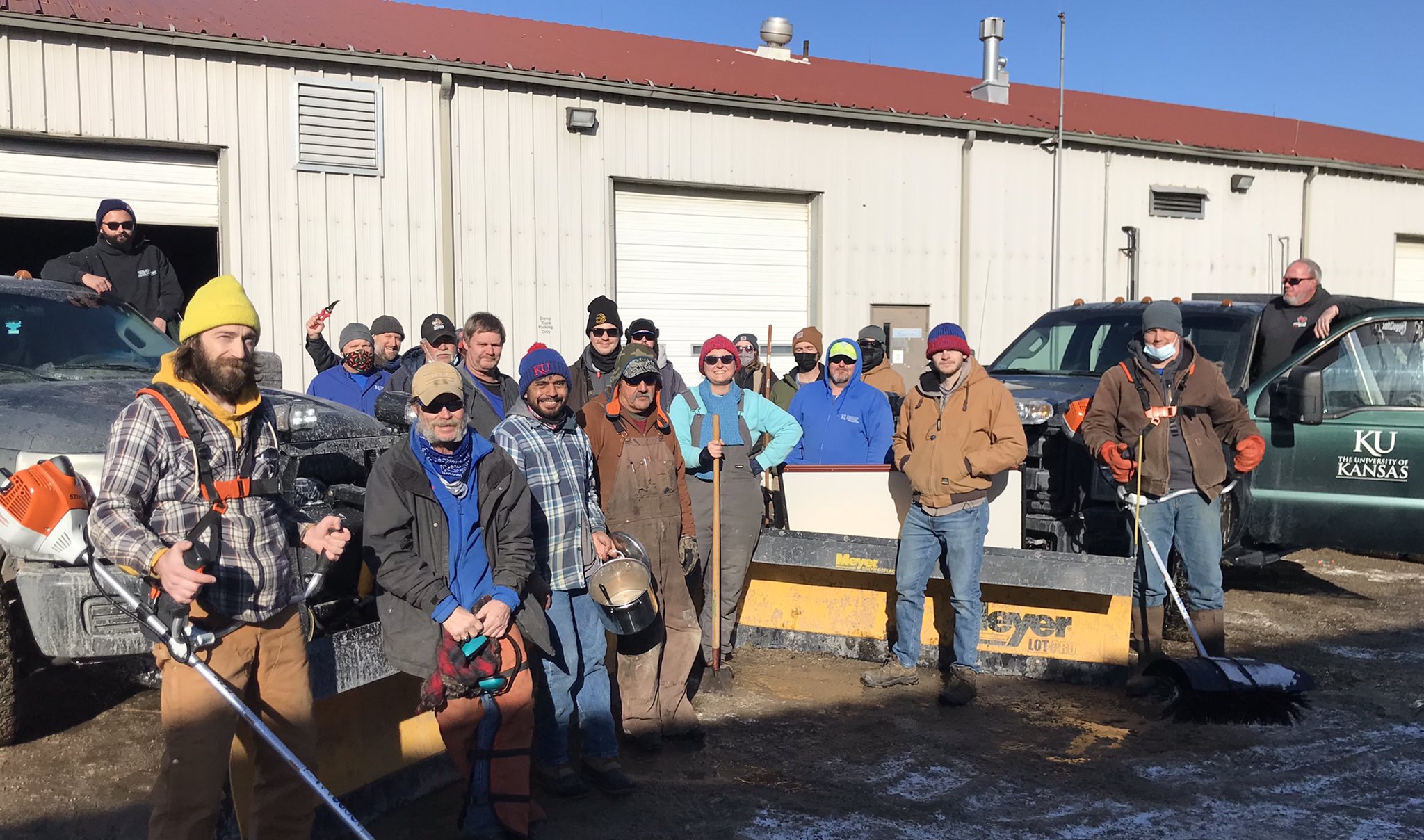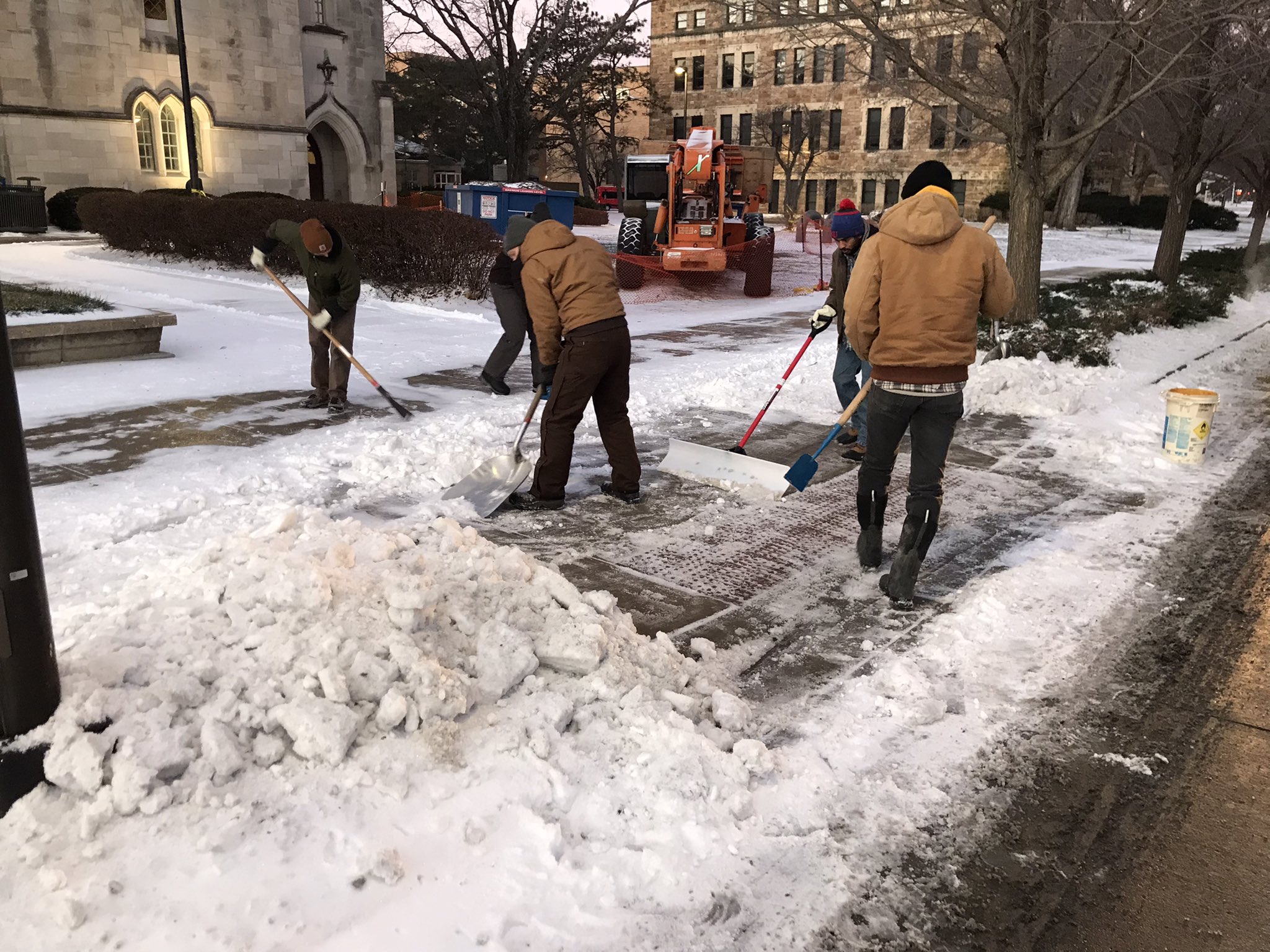Preparation, efficiency keep campus safe during winter weather

LAWRENCE – On the surface, the process of clearing the University of Kansas Lawrence campus of snow and ice seems simple. But it takes a lot more than just removing snow and ice to keep campus safe during the harsh winter months.
 Preparation before bad weather arrives allows KU Facilities Services to make quick decisions and lets the KU Landscaping team be efficient in their efforts to keep the campus safe amidst snowy and icy conditions. But no matter how much preparation there is or how efficient the landscaping team is, the days are long when the weather is harsh.
Preparation before bad weather arrives allows KU Facilities Services to make quick decisions and lets the KU Landscaping team be efficient in their efforts to keep the campus safe amidst snowy and icy conditions. But no matter how much preparation there is or how efficient the landscaping team is, the days are long when the weather is harsh.
When a weather event happens, the work can often start well before sunrise and more recently has been documented on the KU Grounds Crew Twitter and Instagram pages.
“Our No. 1 priority is the safety of everyone on campus,” said Shawn Harding, director of Facilities Services. “We take a lot of pride in university uptime and even compare ourselves to other universities in the area. We really don’t slow down much at all once the decision is made.”
Harding noted that in the extreme winter of 2019-2020, KU kept its campus open more than any other area university except Baker University, which was only open about four more hours than KU. As a result, the KU Landscaping team was named one of the 2020 teams of the year at KU for its considerable work over the treacherous winter that season.
“Baker has the built-in winter weather advantage of being a relatively flat campus,” Harding said. “The stairs and elevation changes on KU’s campus are a big factor for pedestrian and vehicular traffic and make clearing snow and ice even more crucial.”
When called upon, Transportation Services is always ready to spring into action. There are approximately 110 parking lots, including three parking garages, that are all their responsibility to clear for snow.
“This is quite a monumental task to complete,” said Dave Moore, assistant director of Field Operations. “Six people, including myself, are trained, equipped and prepared to report during inclement weather episodes to help clear lots.”
Transportation Services has various pieces of equipment to help with this task, such as three full-sized trucks with blades — one of which has a salt spreader — one Utility Task Vehicle (UTV) with a blade and one small tractor with a bucket.
Even so, Moore contacts Facilities Services and RD Johnson, a private contractor, a few days ahead of the expected winter event to prepare for the removal process and clear the parking lots and garages as weather arrives.
Depending on the amount of snowfall expected, the transportation crew may decide to remove snow a few inches at a time and go over the same parking lot multiple times to avoid overworking and overloading vehicles.
“We also try to burn snow away for the most part instead of pushing it into large piles,” Moore said. “Our gauge for when to push snow would be around 2 1/2 to 3 inches. Once we see the forecast is calling for this amount, this would trigger our inclement weather personnel to go into snow removal mode.”
But it takes a lot more than just showing up and clearing the snow for the transportation crew to clear lots efficiently. An operator needs to know the layout of the lot, including the location of all curbs and drains. Simply pushing the snow off the parking lot can cause issues.
If the forecast calls for heavy snowfall multiple times in the same week, the first snow needs to be pushed far enough off parking lots to make room to easily clear the next round of snow when it arrives.
And even once the campus is cleared, it’s on to the next task for the facilities crew.
“The same staff that you see changing lightbulbs, checking fire alarms, moving furniture and vacuuming the hallways is the same staff that is clearing campus in the winter,” Moore said. “We’ve got a great team and a great teamwork attitude that helps us accomplish a lot in a short amount of time.”